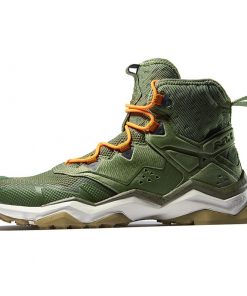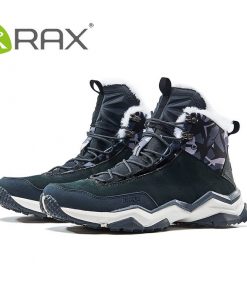articles
Tell Me Where You Walk, I’ll Tell You What To Wear
Good shoes are important. Choosing the right pair of hiking shoes or boots can mean the difference between a party of fun and hours of martyrdom. To help you choose the one that will be ideal for your getaways, here are some tips. Overview to get off on the right foot!
The first aspect you need to consider is the nature of your hikes. Are you going to walk in town, on well-groomed or rough trails? Will there be steep slopes, rocks? Do you plan to only hike for one day or less? The type of shoe recommended for a person who makes day hikes on well-groomed trails is not the same as for one who takes part in long hikes and who has to carry a heavy backpack.
Depending on The Type of Hike
There are three types of shoes or boots: light hiking shoes, short hiking boots, and long hiking boots.
- Light hiking boots are suitable for walks in urban parks and for hiking on well-groomed or slightly uneven trails. They are light, offer fluidity of movement, and have raised soles.
- Short hiking boots are suitable for mountain trips on rugged trails. They are heavier than shoes, have studded soles, and provide ankle support to prevent sprains. The upper, that is to say, what is above the sole (leather or synthetic material), is also longer.
- As for long hiking boots, they meet the needs of people who go on an expedition with a heavy backpack for several days or trekking in high mountains. They allow you to face different types of terrain. Perfect for trips off the beaten track!
Check our bestsellers!
The upper is often thick leather, which provides rigidity, protection, and durability. In a high or medium fit, these boots offer, moreover, ankle support and the stability required for carrying a heavy load. The soles are more rigid, protecting from roots and rocks. In addition, they are equipped with studs for better traction. Many boots also have a gusseted tongue that prevents water and debris from entering inside. Several models also have a collar – where the foot enters the boot – in leather and without stitching, offering better comfort and limiting friction.
Selection criteria
Shoes or boots are made of different materials, each with its own advantages. For example, leather is tough. Nubuck breathes more but is less durable than leather. Synthetic fabrics – or wicking fabrics – allow you to gain lightness and breathe more. As for membranes like Gore-Tex, they are waterproof and offer increased breathability.
The soles play an important role in terms of grip on the ground. Look at the design of the sole. In this regard, it should be noted that Vibram is the leader in high-performance soles and rubber components for the outdoor footwear market.
Also Read: How To Find The Best Hiking Boots For Your Needs?
When it comes to prices, keep in mind that it is not necessarily the most expensive shoe that is the best for you. Do not hesitate to question the expert in-store. On average, you’ll pay between $120 and $180 for light hiking boots. As for short hiking boots, prices are climbing (average price between $149 and $190). Then, for long hiking boots, you can pay up to $400 and more.




























